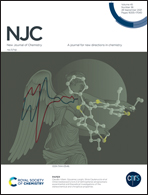A graphene oxide modified cellulose nanocrystal/PNIPAAm IPN hydrogel for the adsorption of Congo red and methylene blue
Abstract
A highly efficient strategy was developed to fabricate a graphene oxide modified cellulose nanocrystal/PNIPAAm IPN (GO-CNC/PNIPAAm IPN) hydrogel, which was capable of effectively adsorbing cationic and anionic dyes. The adsorption of Congo red (CR) and methylene blue (MB) was investigated based on the effects of pH, adsorption isotherms, adsorption kinetics, and recycling experiments. The adsorption capacities for CR and MB of the GO-CNC/PNIPAAm IPN hydrogel adsorbent were 728.8 mg g−1 and 281.9 mg g−1, respectively, and the difference is due to complex electrostatic and chemisorption effects between the adsorbent and the dye, which could be explained using the Langmuir isotherm adsorption model and pseudo-second-order kinetics model. In addition, the GO-CNC/PNIPAAm IPN hydrogel could be used repeatedly, and the adsorption capacities for CR and MB were 84.9% and 82.4% of the original hydrogel after five re-adsorption experiments, respectively. This type of adsorbent provided the advantages of being low-cost, having simple preparation, being non-polluting, and having good adsorption effects and a long service life, which is promising for its use in dye wastewater treatment in the future.



 Please wait while we load your content...
Please wait while we load your content...